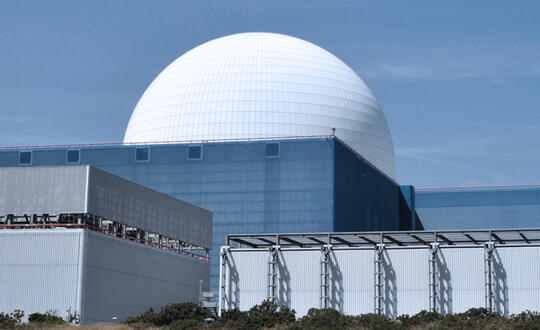Inflation Reduction Act Gives a Boost to the Biogas Sector
Oct 06 2022
An audio summary of this article is available in the player below. Scroll to keep reading.
Listen and subscribe to Womble Perspectives wherever you get your podcasts.
The $369 billion Inflation Reduction Act (the “Act”) enacted in August 2022 expanded and extended numerous tax credits and incentive programs for development of clean energy projects. The biogas industry is one sector that stands to benefit tremendously from the legislation, as the Act expanded the investment tax credit (“ITC”) under Section 48 of the Internal Revenue Code (the “Code”) to include qualified biogas facilities that begin construction before 2025. Previously, the Section 48 ITC was available only for a more limited category of renewable energy technologies, most notably solar energy. Many projects using biogas in connection with generating electricity were previously eligible for an electricity production credit (“PTC”) under Section 45 of the Code. The PTC for renewable electricity generation remains in effect and has been extended by the Act. Importantly, by adding “qualified biogas property” to eligible resources for the ITC, the Act allows for systems generating biogas for other purposes, including the sale of renewable natural gas, to benefit from federal tax credits. The Act specifies that a taxpayer may not claim both the PTC for electricity generated from biogas and the ITC credit for qualified biogas property in respect of the same property, which prevents “double dipping” of the ITC and PTC.
The Act’s expansion of the ITC opens the door for a much larger portion of the biogas industry to benefit from federal tax credits without being associated with generation of electricity, and in many cases will permit project developers to pair the ITC with other existing incentives for biogas generation. Many renewable natural gas projects, for example, are not associated with generating electricity, but benefit from the ability to monetize environmental attributes by participating in the market for Renewable Identification Numbers (RINs) under the EPA’s Renewable Fuel Standard Program or credits under California’s Low Carbon Fuel Standard program. The expansion of the ITC to cover qualified biogas property will allow certain projects to engage with those programs while also claiming the ITC.
The definition of “qualified biogas property” under the ITC can be summarized as property that is part of a system used to convert biomass into a gas which consists of not less than 52 percent methane by volume and captures such gas for sale or productive use and not for disposal via combustion. Qualified biogas property includes equipment used in cleaning or conditioning the gas as part such system. For ITC eligibility, qualified biogas property must begin construction by December 31, 2024. The ITC also now applies to qualified biogas property projects that began construction prior to enactment of the Act and are placed in service after December 31, 2022.
For ITC eligibility, qualified biogas property must begin construction by December 31, 2024. The ITC also now applies to qualified biogas property projects that began construction prior to enactment of the Act and are placed in service after December 31, 2022.
The Act establishes the base amount of the ITC as six percent of the eligible costs of the energy property, with an increased rate of 30 percent of eligible costs for projects satisfying wage and apprenticeship requirements. The IRS will be releasing guidance on the new wage and apprenticeship requirements in the coming weeks or months. Qualified biogas properties that begin construction within 60 days after the IRS issues prevailing wage and apprenticeship rules will be deemed to have satisfied with the wage and apprenticeship requitements for purposes of receiving the higher 30 percent rate. The Act also provides for an additional 10 percent domestic content bonus credit amount and a 10 percent energy community bonus credit amount for eligible projects placed in service in 2023 and later. This creates a possible maximum ITC credit for qualified biogas property of 50 percent of eligible project costs.
The Act also extends the Alternative Fuel Credit under IRC Section 6426 through the end of 2024. This provides a tax credit of 50 cents per gallon of alternative fuel used by the taxpayer to produce an alternative transportation fuel mixture for sale or use in the taxpayer’s business, which includes the use of renewable natural gas as transportation fuel. Beginning in 2025, the Alternative Fuel Credit will transition to the newly created Clean Fuel Production Credit under Section 45Z of the Code. Eligibility for the new Clean Fuel Production Credit will be determined based on the life-cycle emission levels of fuels used in transportation, and the credit will expire in 2027.
Another component of the Inflation Reduction Act of interest to the biogas industry is an additional $1.965 billion for the existing Rural Energy for America Program (REAP). REAP provides grants and loans to farmers and small rural businesses for energy efficiency improvements and renewable energy systems—including eligible biogas technologies. REAP incentives have traditionally been in high demand, with many applicants, and this funding is designed to better meet demand for the popular program.
The potential for biogas production in the U.S. is vast and could play a key role in reaching the Biden Administration’s goal of reaching carbon neutrality by 2050. The industry recycles unused food, wastewater and animal waste into renewable energy and soil products that reduce the need for greenhouse gas-generating fossil fuels. According to the American Biogas Council, if the U.S. built out its biogas infrastructure, it could generate enough renewable electricity to power 9.3 million homes. Such a build-out also would create an estimated 25,000 permanent new jobs, according to the Council.